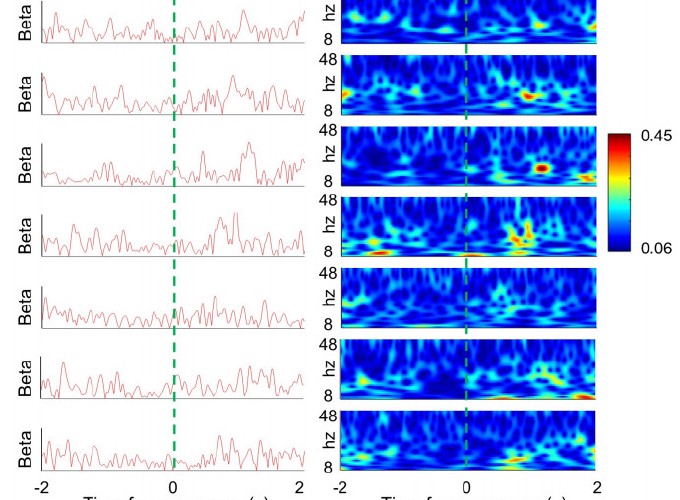Abstract
Motor cortical beta activity (13–30 Hz) is a hallmark signature of healthy and pathological movement, but its behavioural relevance remains unclear. Using high-precision magnetoencephalography (MEG), we show that during the classical event-related desynchronisation (ERD) and event-related synchronisation (ERS) periods, motor cortical beta activity in individual trials (n > 12,000) is dominated by high amplitude, transient, and infrequent bursts. Beta burst probability closely matched the trial-averaged beta amplitude in both the pre- and post-movement periods, but individual bursts were spatially more focal than the classical ERS peak. Furthermore, prior to movement (ERD period), beta burst timing was related to the degree of motor preparation, with later bursts resulting in delayed response times. Following movement (ERS period), the first beta burst was delayed by approximately 100 milliseconds when an incorrect response was made. Overall, beta burst timing was a stronger predictor of single trial behaviour than beta burst rate or single trial beta amplitude. This transient nature of motor cortical beta provides new constraints for theories of its role in information processing within and across cortical circuits, and its functional relevance for behaviour in both healthy and pathological movement.
